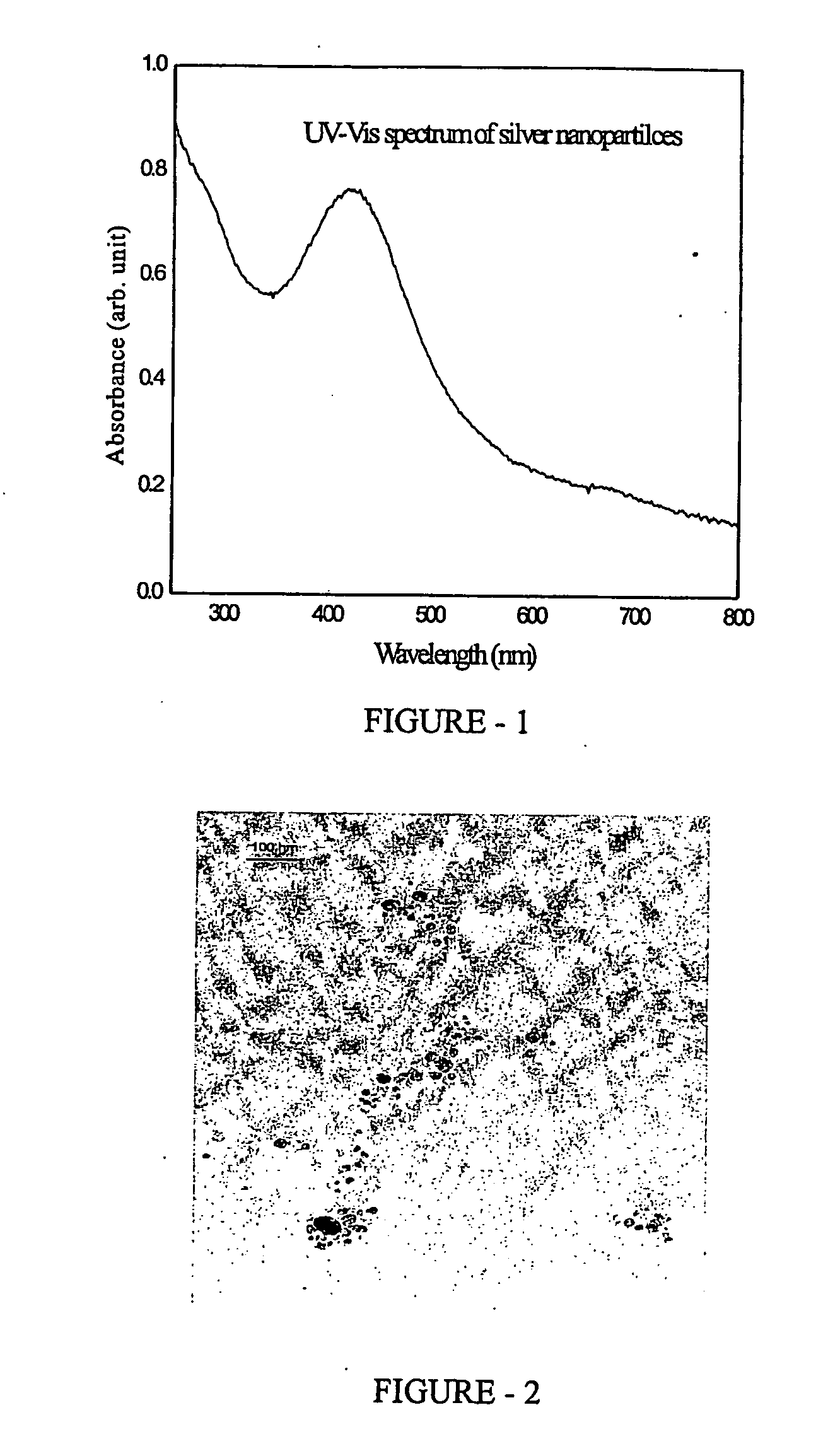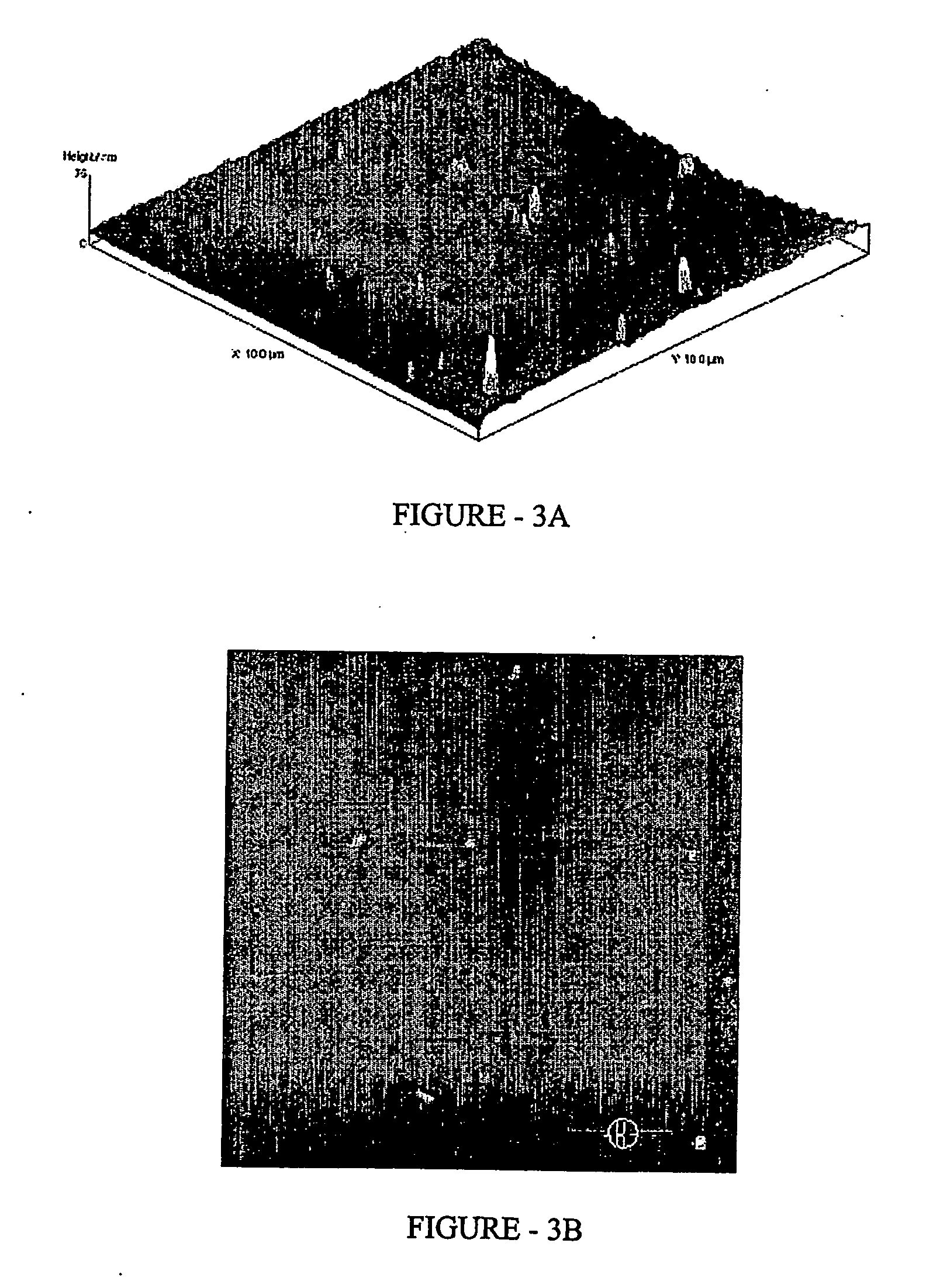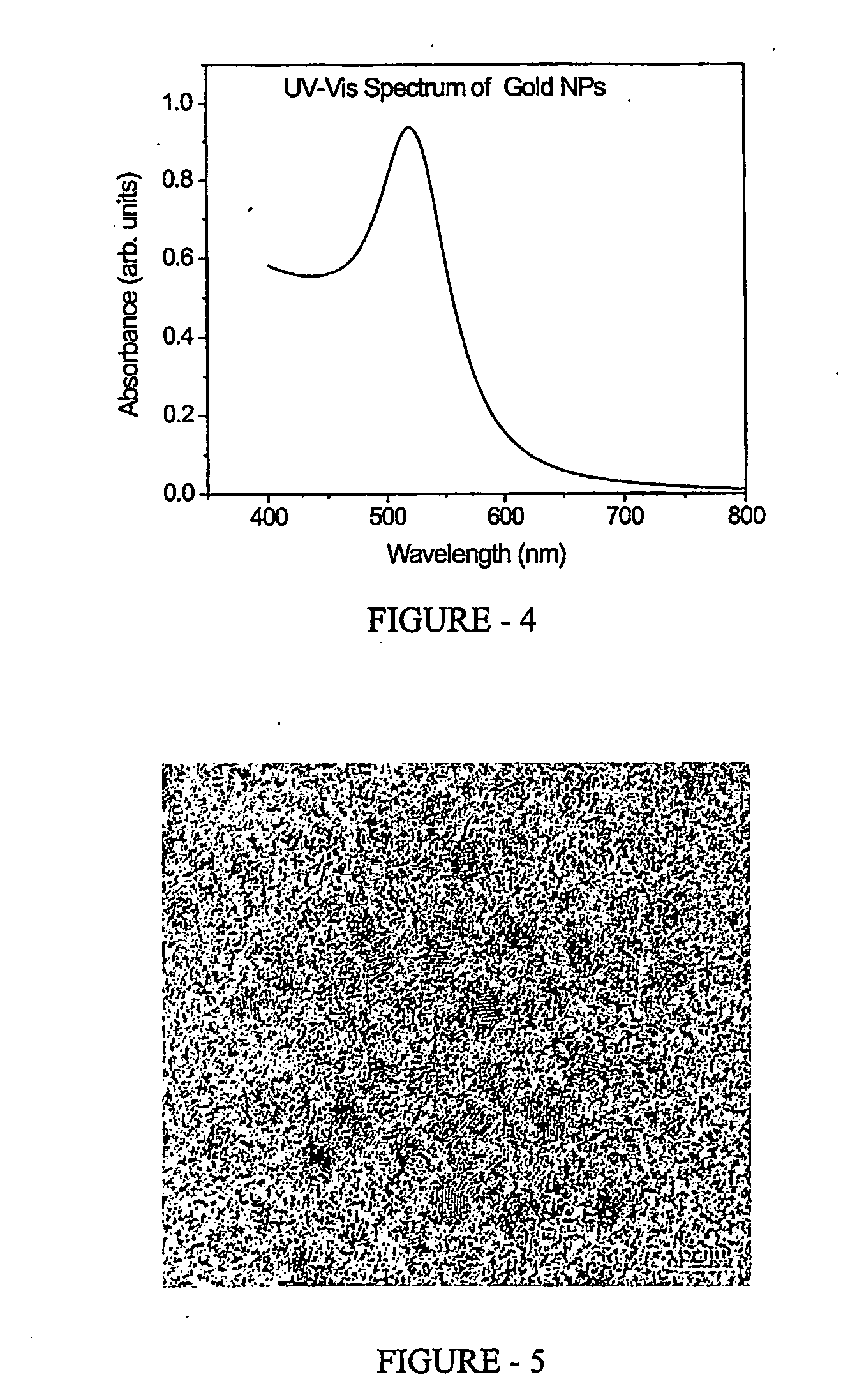Stabilizing Solutions for Submicronic Particles, Methods for Making the Same and Methods of Stabilizing Submicronic Particles
a technology of submicronic particles and stabilizing solutions, which is applied in the direction of microorganisms, viruses/bacteriophages, transportation and packaging, etc., can solve the problems of nanostructured materials, solution, and destruction of sonochemical precursors
- Summary
- Abstract
- Description
- Claims
- Application Information
AI Technical Summary
Benefits of technology
Problems solved by technology
Method used
Image
Examples
example 2
[0084] The water having conductivity of 2.7 microSiemens was used in the experiment and the experiment was carried out at 27 degrees celsius.
[0085] The leaves of Asparagus racemosus (47.00 gm wet wt) were macerated with 150 ml of water as described in example 1 and filtered through Whatman No 1 filter paper under vacuum to obtain a clear 155 ml of solution. From this stock an aliquot of 10 ml was diluted upto 100 ml with deionized water and mixed thoroughly by shaking. The open circuit potential and pH were measured as described in example 1 and found to be +0.09 Volts and 6.0 respectively. The concentration of total organic carbon was measured using Beckman TOC analyzer and was found to be 23,480 ppm.
[0086] The synthesis of gold submicronic particles was carried out by the citrate reduction method as described in J Turkevitch, P. C Stevenson and J Hillier, (1951). Nucleation and Growth Process in the Synthesis of Colloidal Gold. Discuss. Faraday Soc., 11, 55-75. Briefly, 10 ml le...
example 3
[0087] Water having conductivity of 2.7 microSiemens was used in the experiment.
[0088] Fruiting body of fungus Itajahia sp. (45 wet wt) was macerated in 150 ml of water in example 1 and filtered through Whatman No 1 filter paper under vacuum to obtain a clear 165 ml of solution From this stock an aliquot of 10 ml was diluted up to 100 ml with deionized water and mixed thoroughly by shaking The open circuit potential and pH was measured as described in example 1 and found to be +0.11 Volts and 6.0 respectively. The concentration of total organic carbon was measured using Beckman TOC analyzer and was found to be 26,800 ppm.
[0089] The synthesis of FeS nano particles was carried out by solid phase synthesis using sodium sulphide as reducing agent as described W—X Zhang, C B wang and H I Lien, (1998) Treatment of chlorinated organic contaminants with nanoscale bimetallic particles. Catalysis Today. 47; 387-395. Briefly, in 10 ml of extract FeSO4 (0.25 M) was added followed by addition ...
example 4
[0090] Water having conductivity of 2.7 microSiemens was used in experiment.
[0091] In yet another example flowers of Nyctanthes arbor-tristis (common name; harsingar 53.00 gm wet wt) were macerated with 150 ml of deionized water as described in example 1. The suspension was filtered through Whatman No 1 filter paper under vacuum to obtain a clear 170 ml of solution. From this stock an aliquot of 10 ml was diluted upto 100 ml with deionized water and mixed thoroughly by shaking. The open circuit potential and pH was measured as described in example 1 and found to be +0.120 Volts and 5.8 respectively The concentration of total organic carbon was measured using Beckman TOC analyzer and was found to be 20,190 ppm.
[0092] The synthesis of copper nanoparticles in solution was carried out by photo-reduction method as described in S Kapoor and T Mukherjee, (2003) Photochemical formation of copper nanoparticles in poly(N-vinylpyrrolidone). Chemical Physics Letters 370; 83-87. Briefly, 10 ml...
PUM
| Property | Measurement | Unit |
|---|---|---|
| temperature | aaaaa | aaaaa |
| pH | aaaaa | aaaaa |
| diameter | aaaaa | aaaaa |
Abstract
Description
Claims
Application Information
 Login to View More
Login to View More - R&D
- Intellectual Property
- Life Sciences
- Materials
- Tech Scout
- Unparalleled Data Quality
- Higher Quality Content
- 60% Fewer Hallucinations
Browse by: Latest US Patents, China's latest patents, Technical Efficacy Thesaurus, Application Domain, Technology Topic, Popular Technical Reports.
© 2025 PatSnap. All rights reserved.Legal|Privacy policy|Modern Slavery Act Transparency Statement|Sitemap|About US| Contact US: help@patsnap.com



